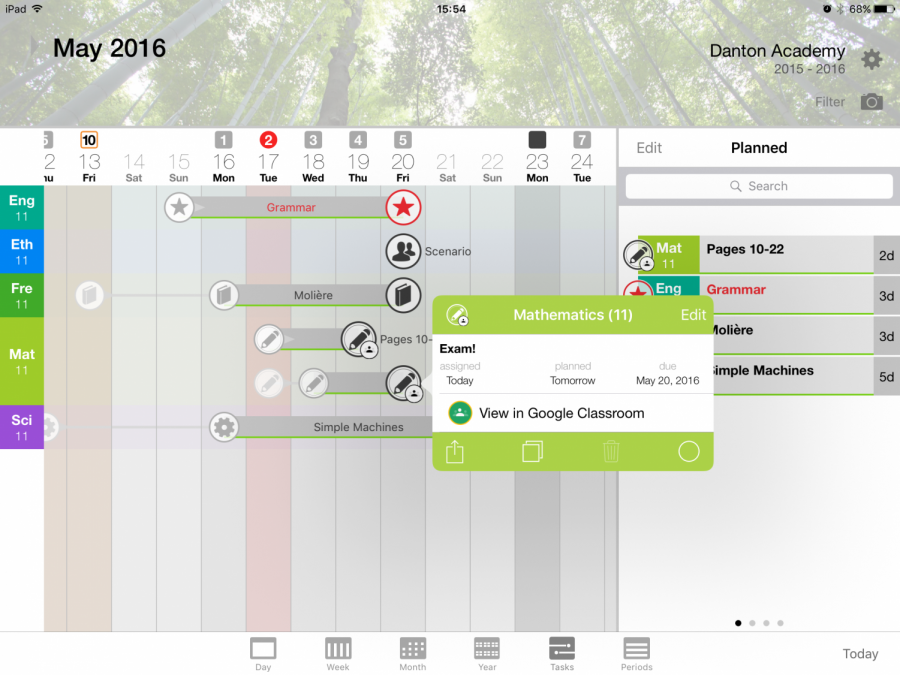Is Studyo worth it?
The Studyo digital agenda, which includes daily tasks, the school calendar, and a timeline.
May 3, 2019
To streamline Viewpoint’s calendar system, faculty are deciding whether or not to embrace a new online calendar system called Studyo based on student preference and environmental concerns.
Currently, some students use a paper planner organize their daily activities, homework, and classes. Many students also use MyViewpoint to look at their daily class schedule, assignments, and updated grades.
Studyo gives students the ability make their own schedules, streamlining MyViewpoint and the paper calendar system into one app that students can customize based on their own schedules. Although Studyo would combine MyViewpoint and a paper planner, MyViewpoint would still be a tool available for students to utilize.
Out of the 45 students that responded to a survey conducted by chief innovation officer Ms. Emerson, 42% of reported they use the paper planner, while 58% said they do not use the paper calendar on a daily basis. In light of these results, 18 students agreed to participate in a test run of Studyo to decide for themselves whether or not it is a good tool for Viewpoint students.
Personally, I frequently use MyViewpoint to look at my grades, plan out my day, and check my upcoming assignments. I have not used the paper calendar since 7th grade. If I am feeling stressed about fitting all of my activities and assignments in one day, I will make a rough after-school schedule by hour on the “Stickies” app on my Mac. I signed up for the Studyo demo to get an in-depth look into a possible technology that would help myself and other Viewpoint students stay organized and efficient.
Julian Bucci, a Studyo employee, educated teachers and students about how the program functions. Studyo’s main page is called the digital agenda and contains three main tabs. The top of the digital agenda maps each student’s day schedule as well as which day of the 8 day rotation is in progress. The left side of the agenda color codes all courses. Each icon represents a different type of workload (e.g. homework, quizzes, labs, tests). A gray icon dictates when something is assigned and a black icon indicates when something is due. A timeline shows when an assignment was assigned and the span up until it is due. The right side of the digital planner maps out what each student plans to work on each day in order of urgency. The student can also break down these assignments into smaller goals. Julian says that the right side of the planner acts as each individual’s “roadmap.”
Within each assignment, students can see any descriptions that teachers have posted for the assignment on MyViewpoint. Students can also select an icon to represent the assignment, add their own photo, and break down the the assignment into smaller goals.
Studyo is different than MyViewpoint because it uses more personal organization and is more visual. Students can plan out more than just their schoolwork, but their personal schedules as well.
While I think that Studyo is helpful in streamlining a student’s tasks, I do not deem it a necessary tool that needs to be implemented at Viewpoint. Studyo would just be another tool that students would be confused how to use. Additionally, I feel fine switching between “Stickies” and MyViewpoint to plan out my day. According to the survey, students provided a wide range of responses telling the administration what they usually use to organize their day if not the planner. Some of the responses to the types of organizing tools students use are the Stickies notes tool on the MacBook, Google Calendar, Todoist Premium, reminders app, and the notes app on iPhone. If students do not use the paper planner, they have a variety of other ways to organize their daily schedules and therefore do not need Studyo to be implemented.
